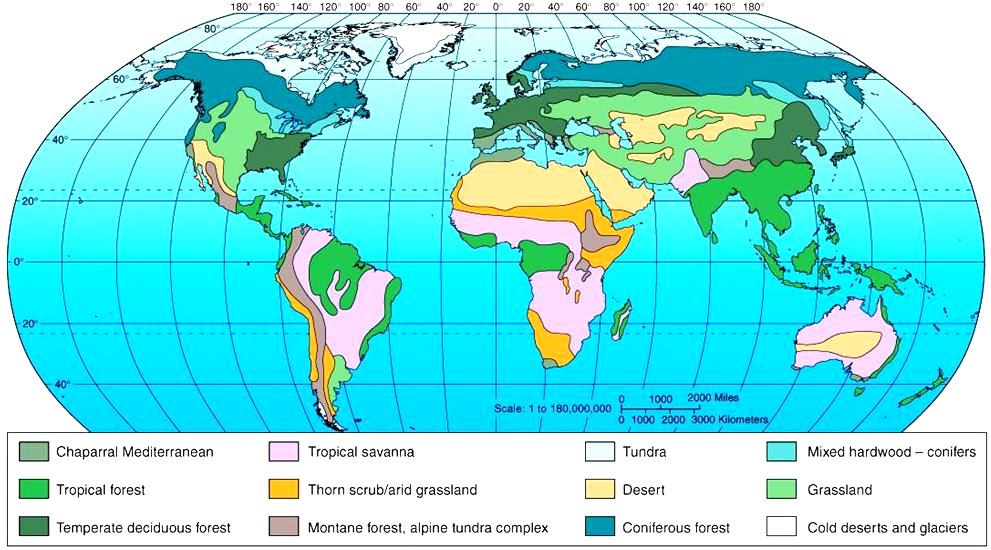Key Concepts
A major community of plants and animals having similar life forms or morphological features and existing under similar environmental conditions. A biome (see illustration) is a complex biotic community covering a large geographic area and characterized by the distinctive life forms of important climax (stable and late-successional) species. In fact, a biome, which may be used at the scale of entire continents, is the largest useful biological community unit. An equivalent term for biome is major life zone; if only plants are considered, the term used often is formation. See also: Ecological communities; Ecology; Environment; Life zones

Each biome may contain several different types of ecosystems. For example, the grassland biome may contain the dense tallgrass prairie with deep, rich soil, whereas the desert grassland has a sparse plant canopy and a thin soil. However, both ecosystems have grasses as the predominant plant life form, grazers as the principal animals, and a climate with at least one dry season. Additionally, each biome may contain several successional stages. A forest successional sequence may include grass dominants at an early stage, but some forest animals may require the grass stage for their habitat, and all successional stages constitute the climax forest biome. See also: Desert; Ecological succession; Ecosystem; Forest ecosystem; Grassland ecosystem; Vegetation and ecosystem mapping
Distributions of animals are more difficult to map than those of plants. The life form of vegetation reflects major features of the climate and determines the structural nature of habitats for animals. Therefore, the life form of vegetation provides a sound basis for ecologically classifying biological communities. Terrestrial biomes are usually identified by the dominant plant component, such as the temperate deciduous forest. Marine biomes are mostly named for physical features (for example, marine upwelling) and for relative locations (for example, littoral or nearshore). Many biome classifications have been proposed, but a typical one might include several terrestrial biomes, such as desert, tundra, grassland, savanna, coniferous forest, deciduous forest, and tropical forest. Aquatic biome examples include freshwater lotic (streams and rivers), freshwater lentic (lakes and ponds), and marine littoral, neritic, upwelling, coral reef, and pelagic. See also: Freshwater ecosystem; Life forms of plants; Marine ecology; Plant geography; Terrestrial ecosystem; Zoogeography





